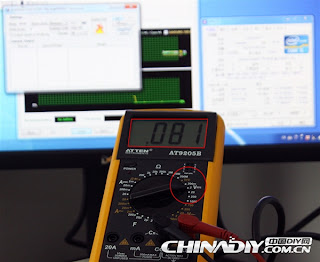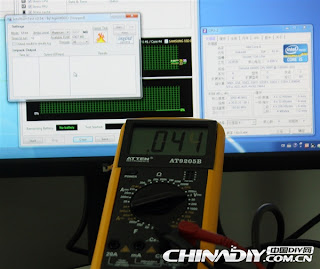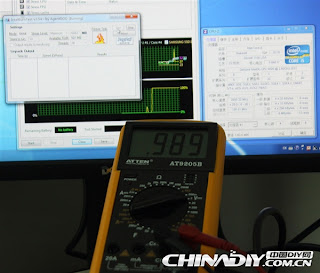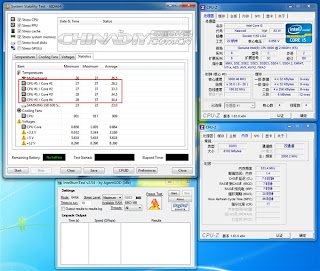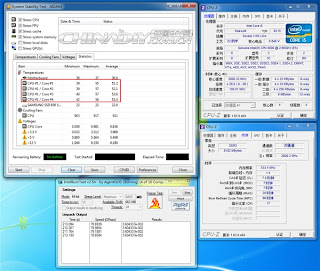Today, we have news from the site, showing a CPU-Z screenshot of the new chip. Surprisingly, the new processor is only under 0.856V. It could be possible if the system is idling, but it seems that the voltage remains the same under stress at 3GHz? Could it be a motherboard bug or a CPU-Z bug? Even though it’s Intel’s new Haswell chip, is it really possible that the chip can reach voltages this low? CHINADIY has got it demystified.
The test platform is said to be a premium branded Z87 motherboard with a Basic 81 radiator with a constant fan speed of 900RPM. Intel Burn Test 2.54 is used to stress the CPU. Room temperature is about 18 degrees Celsius.
With the use of a multimeter connected to the motherboard monitor points, the actual voltage of the CPU was recorded.
With Intel Speedstep Technology, Haswell reduces its clock speeds to 800MHz when idling. CPU-Z then shows a reading of 0.856V, but actual readings are in fact lower. The multimeter shows that most of the time, voltages are from 0.04-0.07V and occasionally goes up to 0.4V. The improved 22nm process and optimized architecture seems to be doing very well.
When the CPU is stressed using Intel Burn Test 2.54, the multimeter voltage increased to 0.989V while CPU-Z voltages remain unchanged. Apparently, the CPU-Z software does not yet support Haswell as well and cannot display real-time voltages.
We have found problem in the current CPU-Z. Will Haswell work better in terms of electrical efficiency, temperatures when compared to Ivy Bridge?
After putting the system on idling status for 5 minutes, temperature readings in AIDA64 is shown to be 33 Degree Celsius, but the core temperatures are not constant with a minimum of 28 to 34 Degree Celsius.
When stressing the CPU under Intel Burn Test, the CPU temperatures increased to 53 Degree Celsius and temperatures differences between the cores are insignificant.
The power consumption on a idle machine was measured to be at 53W.
The system consumes about 85W under CPU Stress and 103W under System stress.
In conclusion, Haswell voltages, temperatures and power consumption is much better as compared to Ivy Bridge’s thanks to the matured 22nm process. We hope that the tests to come will bring more surprises especially when the CPU is overclocked. We also hope that the team at CHINADIY will remove the heatspreader on the Haswell chip to see what kind of thermal grease Intel is using this time for Haswell after complains on the Ivy Bridge chips.



